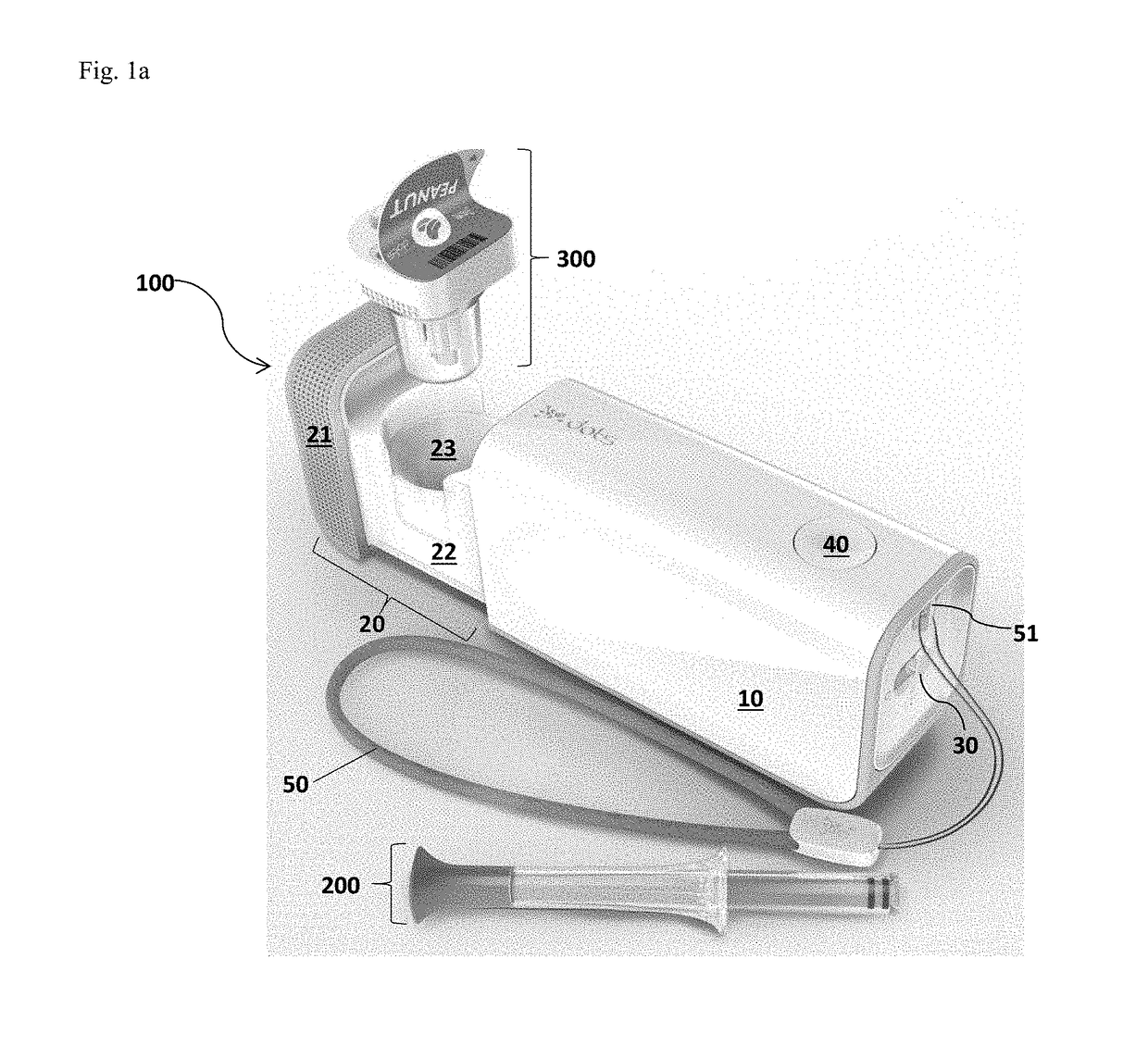Systems and methods for allergen detection
a technology of allergen detection and system, applied in the field of systems and methods for allergen detection, can solve the problems of inability to effectively assess the true allergen content of food, inability to use immunoassays, and inability to train personnel
- Summary
- Abstract
- Description
- Claims
- Application Information
AI Technical Summary
Benefits of technology
Problems solved by technology
Method used
Image
Examples
example 1
of Aptamers that Bind an Allergen Protein
[0249]An in vitro screening experiment based on SELEX method was carried out and aptamers were selected against the allergen targets including egg, gluten, milk, soy, fish, peanut, cashew and crustacean, over the counter-target (combinations of the non-target proteins) and were further engineered for their capability in detecting targeted food allergens.
Experimental Plan
[0250]Various RNA libraries were used to select for binding ability in selection buffer consisting of 100 mM Tris (pH 8), 5 mM EDTA, 150 mM NaCl, 10 mM MgCl2, 0.1% SDS, 0.1% Gelatin, 1% NP-40 (Tergitol), 0.5% Deoxycholate Sodium at 23° C. A given round of selection began with incubating RNA library members in either the buffer alone (negative selection), then collecting the portion of the library that did not respond (i.e. cleave). The second part of each round (when called for) consisted of incubating the non-responsive molecules from the prior negative selection step with th...
example 2
n of Signaling Polynucleotides
[0260]As a proof-of-concept example, two aptamers selected from the screen as indicated in Example 1 were used to design different signaling polynucleotides. The strategy was to delete as much of the primers used for the screen as possible but maintain the core binding sequence to ensure the specificity to a target allergen.
Signaling Polynucleotides Specific to Peanut
[0261]An aptamer selected from the screen (Example 1) that is specific to peanut was used. The full Sequence of the aptamer is shown below.
(7 RiboSPN_full sequence; SEQ ID NO.: 83)5′TAATACGACTCACTATAGGCGTAGCCTGATGAGCTCACCACATACCATGTACCACGTGCGAAACGTGGTGAAAGCCACGTAGCTGCGCC3′
[0262]The core sequence to bind to peanut is shown below.
(7 SPN-core sequence; SEQ ID NO.: 84)5′CTCACCACATACCATGTACCACGTG3′
[0263]The original full sequence of SEQ ID NO.:83 was modified to delete as much of the primers as possible at both 5′ terminus and 3′ terminus without changing the binding sequence of SEQ ID NO.: 84. ...
example 3
nce Polarization Measurement
[0268]The signaling polynucleotides 7 SPN-A (SEQ ID NO.: 85), 7 SPN-B (SEQ ID NO.: 86), 7 SPN-C (SEQ ID NO.: 87) which bind peanut allergens are labeled with a fluorophore Texas Red at the 5′ terminus (marked as SPN-P). Several different food samples containing peanut are processed using T buffer. 20 μl sample for each test is used. The fluorescence polarization with SPN-P (20 μl SPN-P at the concentration of 100 μM) or without SPN-P are measured. Table 3 lists the study design. Changes in FP are measured in a commercial FP equipment.
TABLE 3SPN binding test on samples containing peanut butter (PB)12345678+ SPN-P−SPN-PAPB PretzelPB icePB cookieGranolaPB PretzelPB icePBGranolacreamBarcreamcookieBarBPB PretzelPB icePB cookieGranolaPB PretzelPB icePBGranolacreamBarcreamcookieBarCPB PretzelPB icePB cookieGranolaPB PretzelPB icePBGranolacreamBarcreamcookieBarDPB PretzelPB icePB cookieGranolaPB PretzelPB icePBGranola1:10cream1:10Bar1:10creamcookieBar1:101:101:10...
PUM
| Property | Measurement | Unit |
|---|---|---|
| Angle | aaaaa | aaaaa |
| Fraction | aaaaa | aaaaa |
| Force | aaaaa | aaaaa |
Abstract
Description
Claims
Application Information
 Login to View More
Login to View More - R&D
- Intellectual Property
- Life Sciences
- Materials
- Tech Scout
- Unparalleled Data Quality
- Higher Quality Content
- 60% Fewer Hallucinations
Browse by: Latest US Patents, China's latest patents, Technical Efficacy Thesaurus, Application Domain, Technology Topic, Popular Technical Reports.
© 2025 PatSnap. All rights reserved.Legal|Privacy policy|Modern Slavery Act Transparency Statement|Sitemap|About US| Contact US: help@patsnap.com



